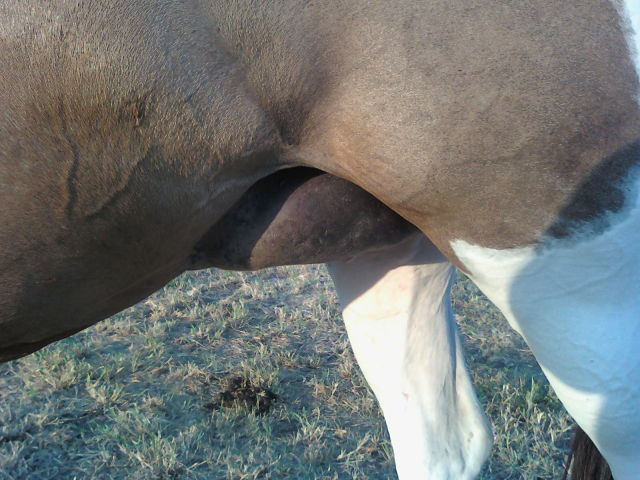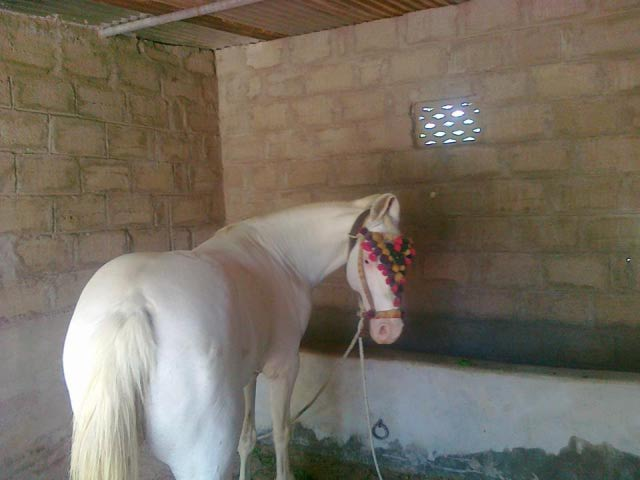QuestionI have My 8 year old QH gelding on Seminole Wellness Senior.It is a low carb feed and has great ingredients. I had been told that the senior feed is the easiest to digest and also he needed to lose a few pounds so comparing feeds I chose this one. One of the problems with this feed is that it gets so compacted in the bag or putting it in a can that you can't even scoop it. You have to chop it with something first to break the clumps apart. I was wanting to add something to it (maybe rolled oats)that maybe would help keep it separated yet,keep it low carb and nutritious. If you could give me your feeling on this I would greatly appreciate it.
AnswerHi Lorraine,
Thank you for your question...I certainly can relate! Being from Canada I battle the cold and the effects it has on feeding horses for half of every year and I just thumped my bag of feed on the ground to break it up for morning feeding :(
Senior feeds are generally designed to be easier to digest as the digestive system of the older horse becomes a little less efficient as they age. At your horse's age, senior feed may not be a necessity but it certainly will not hurt him. The Seminole Senior Mix actually contains added starch...in the form of oats and barley. The cereal grains (oats, barley, corn, wheat, rye) are made up primarily of starch, whereas the oilseeds (soybeans, canola, flax) are made up primarily of protein and fat. When you look at an ingredient list for feeds, the ingredients are listed in order of how much is added to the feed...from most to least. This allows you to guage how much of each ingredient is added, in this case the feed is probably 1/5 added starch.
But the starch is not what's causing the feed to freeze up and clump (I'm assuming in the cold). The molasses is largely to blame for the clumping and it will freeze hard as a rock. Adding a large quantity of oil to the feed and including ingredients that break down into a powder, all along with the molasses, makes a feed that will clump and ultimately freeze into a form very difficult to feed. Some feed manufacturers will vary the ingredient list slightly during winter months to prevent the freezing but with only moderate results. Ultimately, I think it comes down to picking and combining ingredients for a supplement with the forethought of what impact temperature will have on them. This is something you don't have a lot of control over. Switching to a pelleted feed certainly eliminates the clumping issue and it is very possible to find a comparative feed made into a pellet.
Adding a new ingredient may help keep the clumping ingredients separated...but adding oats will only add a whole lot more starch. If what you are looking for in a feed is more energy without a lot more starch then perhaps you could add beet pulp to the mix. There is already some beet pulp in it (probably in a shredded form), and adding more will mean you will have to soak the feed before feeding. If you are feeding grain to bring more protein to the diet, think about adding a processed oilseed to the mix...my favorite is micronized or roasted soybeans (you don't want to add soybean meal because it will only add to the clumping), and they are readily available in this area. If freezing is the root of the problem, unfortunately there is no contraption that keep feed bags warmed enough to prevent clumping without making it too hot to spoil.
If you would like some suggestions on alternative feed choices (even within the same feed company) just let me know and I'll help however I can.
Thanks, Corlena

 My new draft horse.....
Question
Bubbs Gentle Giant
I have just pu
My new draft horse.....
Question
Bubbs Gentle Giant
I have just pu
 What could my horse be allergic to?
Question
Blue
I have a 14 year old paint mare that just
What could my horse be allergic to?
Question
Blue
I have a 14 year old paint mare that just
 fully conditioned
Question
fully conditioned
hello maam. is this h
fully conditioned
Question
fully conditioned
hello maam. is this h
 horse lacking muscle
Question
horse lacking muscle
hello maam, can i
horse lacking muscle
Question
horse lacking muscle
hello maam, can i
 which breed fo grass is this one
Question
which breed fo grass i
hello, what breed of gr
which breed fo grass is this one
Question
which breed fo grass i
hello, what breed of gr